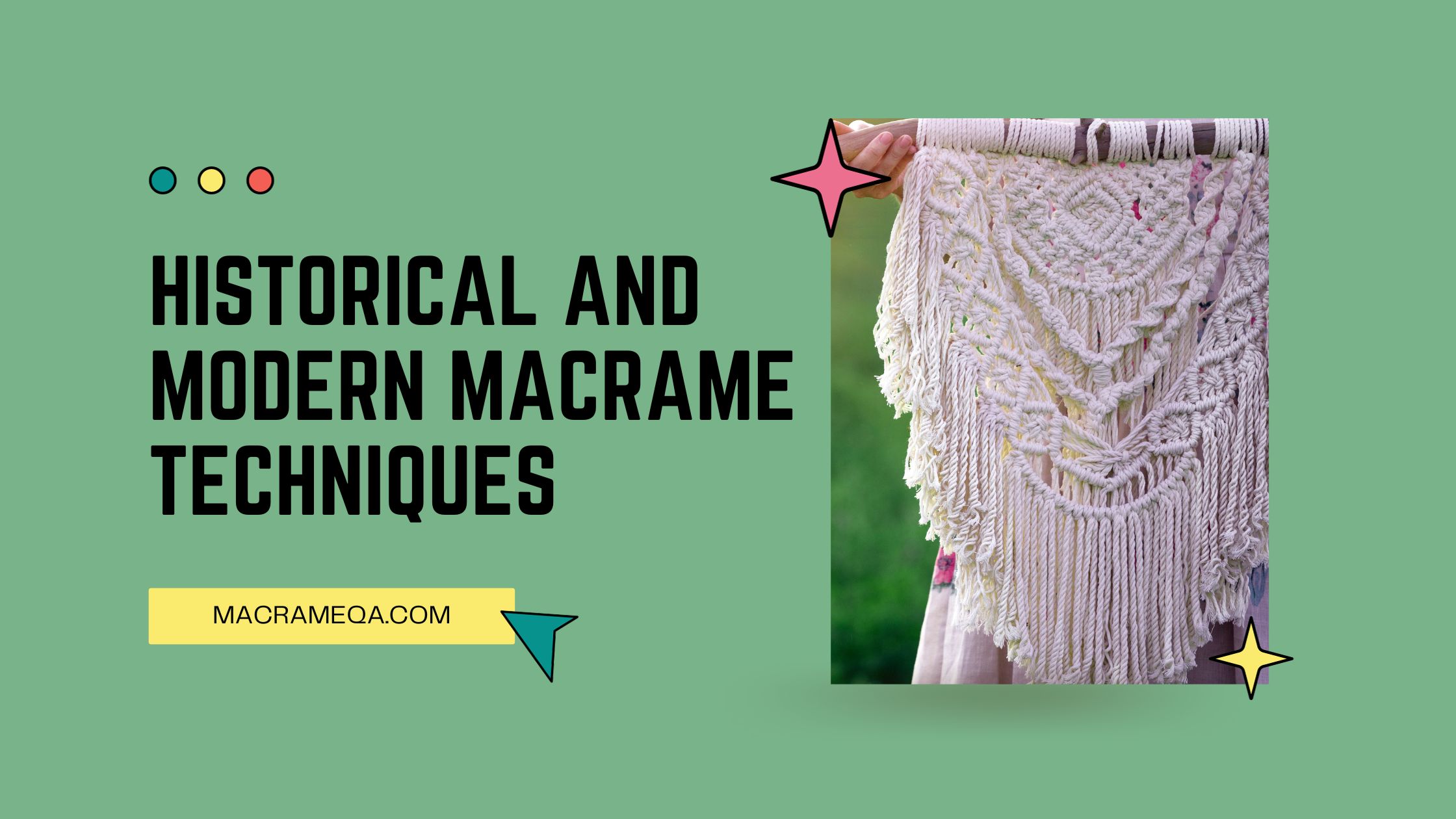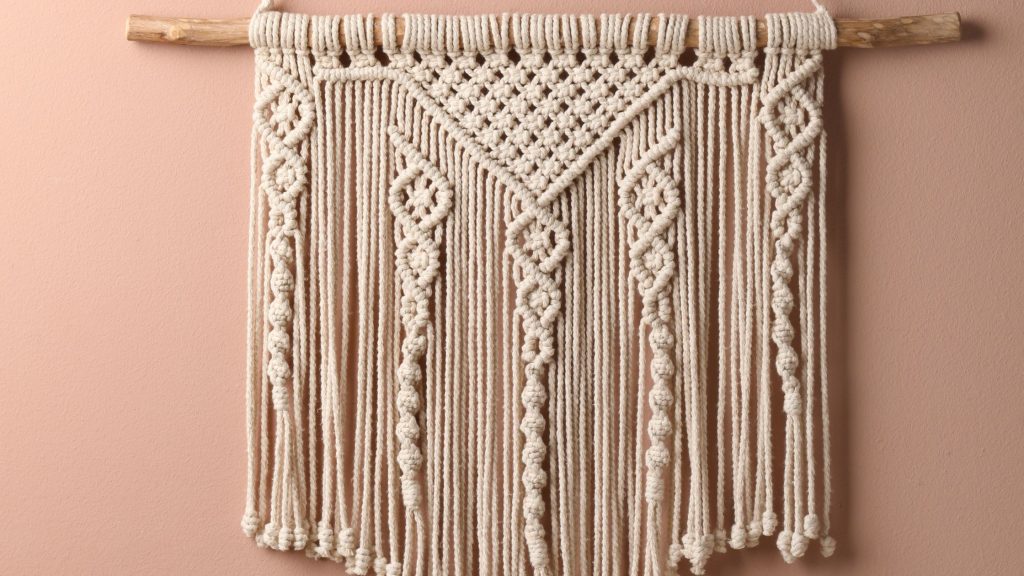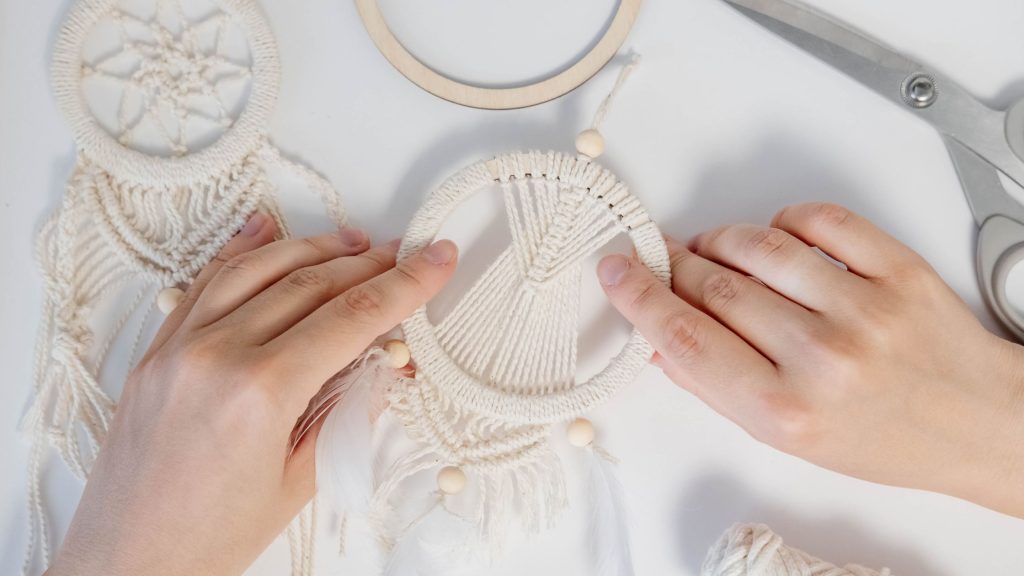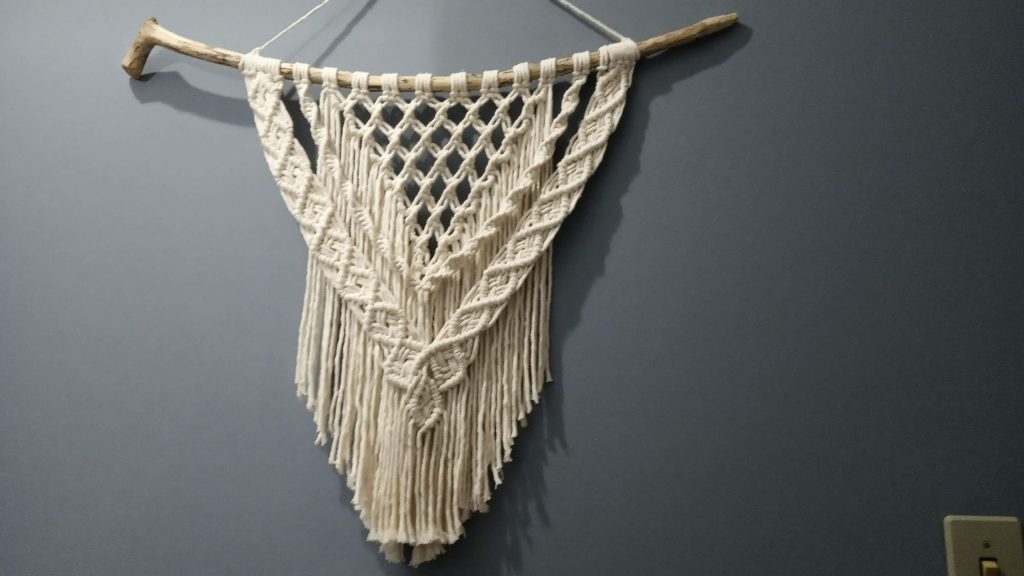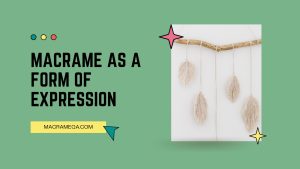Macrame, the art of knotting cord or rope to create decorative patterns, has a rich history that dates back centuries. However, as time passed, the techniques used in macrame have evolved. In this article, we will explore the differences between historical and modern macrame techniques. By understanding these distinctions, you’ll gain a deeper appreciation for the craft and be inspired to explore the endless possibilities of macrame in your own creations. Get ready to discover the fascinating world of macrame and how it has transformed over time.
Historical Macrame Techniques
Origin of Macrame
Macrame is believed to have originated in ancient times, with evidence of its existence dating back thousands of years. While the exact origin is uncertain, it is thought to have originated in the Arabian Peninsula, spreading across various cultures over time.
Materials Used
Historically, macrame artists primarily used natural fibers such as cotton, silk, jute, and hemp to create their intricate designs. These materials were readily available and allowed for the flexibility and durability needed in macrame pieces. Additionally, a limited color palette was commonly used, which focused on earthy tones and neutral colors to emphasize the texture and craftsmanship of the knots.
Knotting Styles
Numerous knotting styles have been employed throughout history to create macrame designs. The square knot, clove hitch, double half hitch, and alternating square knots are some of the traditional techniques that have been widely used. Each knotting style creates a distinct pattern and texture, contributing to the overall aesthetic of the macrame piece.
Function and Purpose
In its historical context, macrame served both practical and decorative purposes. It was used to create various items such as nets, hammocks, and belts, making it a versatile technique. Macrame also held symbolic and cultural significance in different societies, often used to convey messages or represent specific beliefs. The intricate patterns and designs were valued for their beauty and craftsmanship.
Modern Macrame Techniques
Contemporary Adaptations
In modern times, macrame techniques have undergone significant adaptations to suit the changing tastes and needs of artists and consumers. While historical techniques are still appreciated and practiced, contemporary macrame often includes innovative approaches that capture a more modern aesthetic.
Incorporation of Mixed Materials
One of the notable differences in modern macrame techniques is the incorporation of mixed materials. Alongside the traditional natural fibers, synthetic fibers, metallic elements, beads, and gemstones are often used to add a touch of contemporary flair. This fusion of materials allows for more versatility and opens up new possibilities in terms of design and texture.
Experimentation with Color
While historical macrame predominantly focused on a limited color palette, modern macrame techniques experiment with a diverse range of colors. Artists now have the freedom to explore bold, vibrant hues or subtle, muted tones. The use of gradient and ombre effects adds depth and dimension to the designs, enhancing their visual appeal.
Exploration of New Knotting Styles
Modern macrame techniques have also seen the emergence of new knotting styles and variations. Micro-macrame, a technique that involves using thinner cords and creating intricate designs, has gained popularity in recent years. Fusion with other fiber arts like weaving or knitting has expanded the possibilities for combining different techniques, resulting in innovative and unique macrame pieces. Artists are continuously pushing the boundaries of traditional macrame, exploring new ways to create captivating textures and patterns.
Contemporary Adaptations
Integration into Interior Design
One of the most significant contemporary adaptations of macrame techniques is its integration into interior design. Macrame wall hangings, plant hangers, and curtains have become popular choices for adding a bohemian or eclectic touch to living spaces. Macrame’s versatility allows it to seamlessly blend with various decor styles, contributing to a cozy and inviting atmosphere.
Fashion and Accessories
Macrame has also found its way into the world of fashion and accessories. From statement necklaces and bracelets to earrings and handbags, macrame is now a sought-after technique in the world of wearable art. The intricate knotting styles and unique textures make these pieces stand out, adding an element of individuality to any outfit.
Artistic and Sculptural Innovations
Artists and sculptors are constantly experimenting with macrame techniques to create stunning artistic and sculptural pieces. Macrame installations, 3D sculptures, and large-scale artworks showcase the versatility of this traditional craft. These innovative adaptations push the boundaries of macrame, transforming it into a form of contemporary art.
Incorporation of Mixed Materials
Synthetic Fibers
The incorporation of synthetic fibers, such as nylon or polyester, has added durability and increased longevity to modern macrame pieces. These fibers often possess a natural sheen and are available in a wide range of colors, offering artists more creative choices. Synthetic fibers also allow for the creation of intricate and delicate designs that may not have been possible with traditional natural fibers.
Metallic Elements
The addition of metallic elements, such as brass or copper wires, adds a touch of glamour and sophistication to contemporary macrame designs. These metallic accents can be incorporated within the knots themselves or used as decorative elements within the overall piece. The combination of soft fibers and metallic elements creates a visually striking contrast that elevates the aesthetic appeal of the artwork.
Beads and Gemstones
The use of beads and gemstones in modern macrame techniques adds texture and a sense of luxury to the designs. Beads can be incorporated within the knots, serving as focal points or accents, while gemstones can be strategically placed to add a vibrant burst of color. This incorporation of beads and gemstones allows artists to create personalized designs and add a touch of individuality to their macrame pieces.
Experimentation with Color
Diverse Color Palette
Unlike the limited color palette used in historical macrame, modern macrame techniques embrace a diverse range of colors. Artists have the freedom to choose from a vast selection of hues, ranging from bold and vibrant tones to more subtle, pastel shades. This expanded color palette allows for greater creativity and expression within the designs, resulting in macrame pieces that can easily complement any interior or personal style.
Gradient and Ombre Effects
Modern macrame often utilizes gradient and ombre effects to create striking visual effects. By selectively choosing cords of varying colors or dyeing the cords themselves, artists can achieve a gradual transition of color within their knots and patterns. These gradient and ombre effects add depth and dimension to the macrame pieces, making them visually captivating and visually stimulating.
Intricate Patterns and Designs
With the exploration of new macrame techniques, artists have the opportunity to create intricate patterns and designs that were previously unattainable. The combination of different knotting styles, colors, and textures allows for the creation of highly detailed and complex macrame pieces. From elaborate wall hangings to delicate jewelry, these intricate patterns showcase the skill and artistry of modern macrame artists.
Exploration of New Knotting Styles
Micro-Macrame
Micro-macrame is a technique that involves using thinner cords and creating intricate designs with small, delicate knots. This technique allows for the creation of highly detailed and intricate patterns, capturing the essence of miniaturized macrame art. Micro-macrame is often used in jewelry-making or as a focal point in smaller decorative pieces.
Fusion with Other Fiber Arts
Macrame has found a natural affinity for fusion with other fiber arts such as weaving or knitting. By combining these techniques, artists can create unique and visually striking pieces that incorporate the textures and patterns of different fibers. This fusion of fiber arts opens up endless possibilities for creative exploration and encourages artists to venture beyond the boundaries of traditional macrame.
Innovative Textural Combinations
Exploration of new knotting styles also involves experimenting with different textural combinations. By combining various knots, materials, and thicknesses of cords, artists can create three-dimensional effects and add depth to their macrame pieces. These innovative textural combinations create visually intriguing and tactile pieces of art, pushing the boundaries of what can be achieved with macrame.
Conclusion
In conclusion, historical macrame techniques laid the foundation for the art form, focusing on natural fibers, limited colors, and traditional knotting styles. However, modern macrame techniques have evolved to embrace a wider range of materials, colors, and knotting styles. Artists now have the freedom to experiment, incorporating mixed materials, exploring vibrant color palettes, and pushing the boundaries of traditional knotting techniques.
Macrame has not only found its place in interior design and fashion but has also expanded into the realm of contemporary art. The fusion of historical techniques with modern adaptations has allowed macrame to continue captivating and inspiring artists and enthusiasts alike. Whether appreciating the beauty of traditional macrame or embracing the innovative approaches of modern macrame, this ancient art form continues to weave its way into our hearts and homes.

